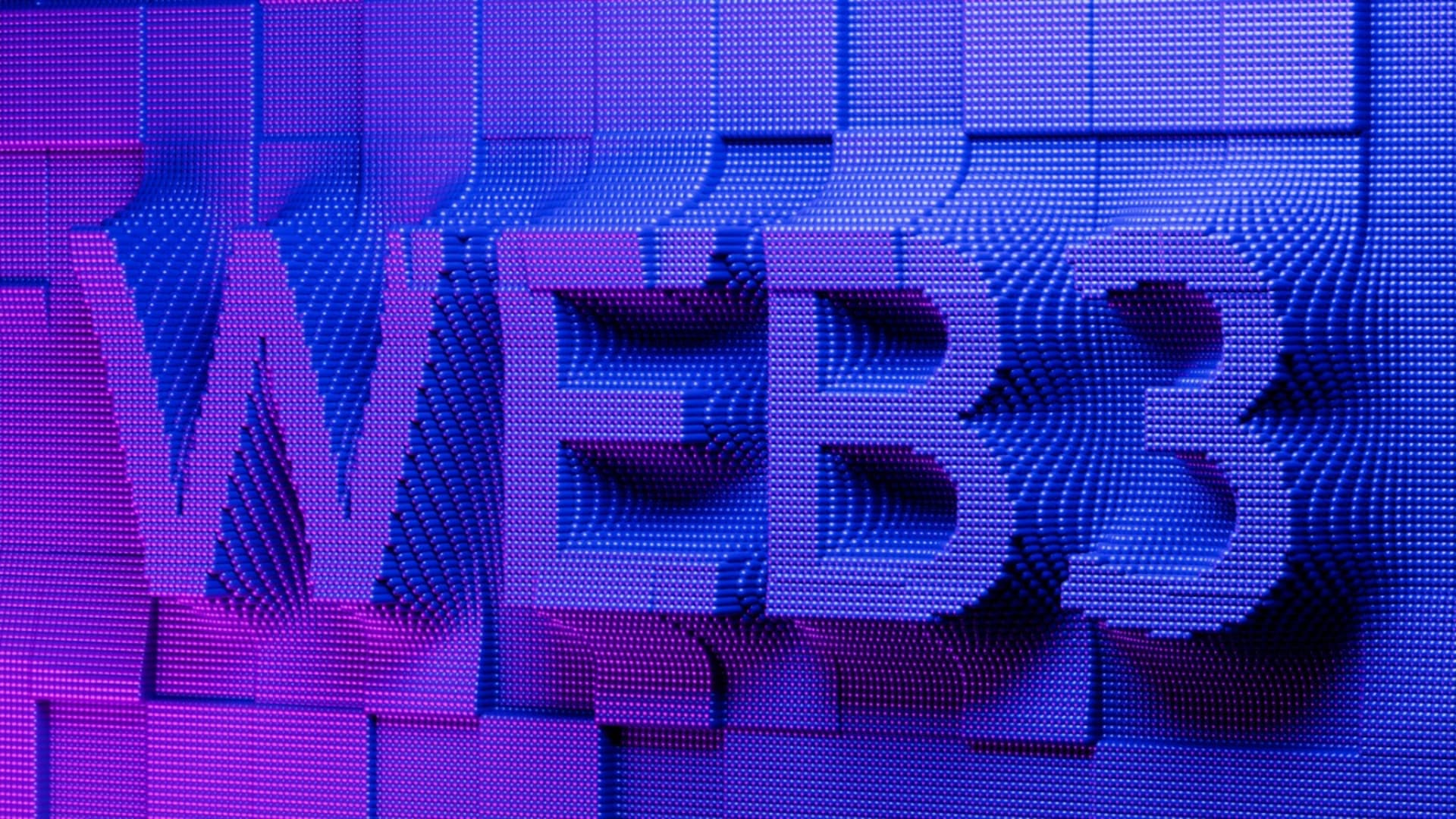Web1, the initial internet, provided the fundamentals. Hyperlinks enabled us to navigate the internet and provided us with unprecedented access to information. Web2, or the social web, expanded on this infrastructure and offered social networks such as Facebook, which shifted our focus from browsing to generating and sharing content.
Web3 takes it a step further. It is an effort to rewrite the web’s rules by utilizing the rise of blockchain technology and decentralized networks. Blockchain provides consumers with an immutable and transparent method for storing data, but the popularity of NFTs, DAOs, and DeFi has exploded.
Web3’s potential is vast, and the possibilities of distributed ledgers, cryptocurrencies, and decentralized networks are unprecedented on the internet. However, blockchain is still in its infancy, and its widespread adoption faces severe technical, environmental, ethical, and governmental obstacles.
Web3 navigation can be difficult for businesses and executives. Despite the fact that some companies have had significant success with this technology, certain high-profile failures have highlighted the risks. In addition, many individuals do not comprehend Web3, making it more difficult for enterprises to make educated judgments.
The Web3-game’s rules are still being created, making it difficult to predict what will occur next. This interesting, baffling, contentious, and occasionally utopian environment is conveniently summarized by the name “Web3.” As we continue to explore its potential, it will be up to us to appropriately exploit its possibilities, keeping safety and progress in mind.
But What Exactly is Web3?
Web3 is an umbrella term for the next phase of internet infrastructure development, which focuses on the data layer, protocol layer, and application layer of the existing internet infrastructure.
It aims to become the most disruptive version of the web, one that builds on and improves the existing technologies and protocols while introducing new features, such as enhanced privacy, scalability, and security, and laying the groundwork for the creation of a truly decentralized and independent internet.
When discussing Web3, it is vital to remember that the internet has been constantly evolving since its inception in the 1960s. Web3 is the name given to the most recent step in the internet’s evolutionary history. It is a complex network of technology, protocols, and apps that, by introducing the concept of decentralization, aims to make the internet more safe and dependable.
- At the data layer, distributed ledger technologies such as blockchain and hashgraph enable a secure and decentralized method of data storage and transport.
- On the protocol layer, Ethereum blockchain-powered decentralized applications (or dapps), decentralized autonomous organizations (DAOs), and smart contracts contribute to user-friendly interfaces and systems that enable an unparalleled amount of control and autonomy over data-driven services.
- The application layer is where the final goods, services, and interfaces are produced to utilize the Web3’s underlying technologies, enabling new ways of interacting, working, and transacting on the internet.
In the mind of its proponents, the internet as we know it will soon enter a new era of decentralized cooperation and innovation with Web3. If that is the case, it would have the potential to totally transform how people create, distribute, and access data-driven goods and services, with blockchain, automation, and machine learning bringing us closer to a truly global digital economy.
Too Good To Be True?
Blockchain, non-fungible tokens (NFTs), and Web3 have grown in popularity in recent years due to their proclaimed ability to provide an alternative solution to current problems and business models. With the introduction of blockchain, many individuals hope it will overhaul old systems and provide a more safe, efficient, and transparent model.
Similarly, NFTs are viewed as an innovative method of demonstrating ownership, allowing interested parties to realize value from their digital assets. Web3 is proposed as a web-based platform that could give users greater control over their data and break up monopolies and other restrictive practices.
And yet, if 2022 is anything to go by, it appears that much of the excitement and enthusiasm around these advancements is unwarranted and misguided. Despite claims of improved transparency, decentralization, and security, these technologies do not quite live up to their lofty promises.
First, let’s go over some key events that have happened so far:
After a very healthy start, NFTs became radioactive almost overnight—by all accounts, the market crashed with an almost unprecedented volatility. One day you had stars praising ugly ape art, and the next, everyone was worried about energy consumption; and the fact is that NFTs mean very little in terms of actually owning something.
Some of the biggest cryptocurrency traders crashed and burned in an almost domino-like effect: first it was Terra, with a $2 billion loss overnight and a complete obliteration of the whole ecosystem in a matter of days. The total loss amounted to around $40 billion, and Terra’s founder Do Kwon is facing fraud charges.
Then, the once venerated FTX, founded and led by the Sam Bankman-Fried (SBF, to many), one of the greatest investors/philanthropists of our time, crashed due to a lack of liquidity and massive withdrawals from concerned investors, which in turn opened the lid on how unprofessional the whole operation was.
Further investigations on the matter led to accusations of mismanagement, illegal trading, backdoor deals, and even fraud. SBF, who once testified for the need of regulations for Crypto, is now facing lawsuits and possibly jail.
What went wrong? We can tackle this question in two ways.
1. Web3 Isn’t As Disruptive as People Wanted to Believe
Realistically, blockchain, NFTs, and Web3 are not revolutionary but rather valuable technologies that offer incremental enhancements to the existing conventional systems.
First, blockchain offers a limited number of benefits relative to existing methods. For instance, blockchain is merely a distributed ledger that records financial transactions, despite innovative hoopla. While it is true that blockchain delivers faster and more secure transactions due to its decentralized architecture, blockchain is also susceptible to a number of potential downsides, including 51% assaults, network instability, inefficient scalability, and energy costs.
Next, NFTs have introduced a supposedly breakthrough method for the distribution of digital assets. But, as shown before, so far NFTs have been nothing more than a smart tool to prey on inexperienced investors’ foolish attempts to generate rapid profits. In addition, the market is susceptible to fraud and arbitrarily fluctuating prices, rendering it a risky investment.
Case in point, the once $2.5 Million NFT of Jack Dorsey’s first tweet is now worth around $10,000. For those keeping count, that’s a 99% value drop in less than two years.
On the other hand, Blockchain, the heart of Web3 is an impressive technological achievement, but one that poses some new and very significant challenges. For example:
- Scalability: Blockchain’s major difficulty is scalability. The network can process exponentially more transactions as it increases. More individuals using the blockchain slows it. This is especially problematic for high-throughput applications like payments and stock trading.
- Cost: Another blockchain concern is cost. As the network grows, node costs rise. Smaller enterprises may not be able to afford a whole node.
- Blockchain security is another issue. There may be security flaws in the new technology. Hackers have exploited blockchain technologies, such as the 51% assault, to manipulate or control the network.
- Absence of Regulations: Blockchain technology lacks legislation and standards. The technology’s use and implementation are undefined because it’s new. A lack of norms and rules may provide security problems.
Web3 is frequently promoted as a new web platform that will equip users with the tools and knowledge required to displace existing monopolies and resistance. Sadly, this is an overly ambitious objective; even if people were equipped with the required information and tools, it would be difficult to overthrow the existing power blocs. In addition, Web3 is constrained by its continued reliance on existing infrastructure and by existing laws and regulations.
2. The Market Has Been Misused
In the second half of the 2010s, we saw a massive increase in cryptocurrency. With a new generation of GPUs, people across the world started mining as the price for Bitcoin and Ethereum skyrocketed. In this context, many early adopters grew extremely wealthy, which led to a craze that consumed the market.
For example, finding a Video Card for gaming was almost impossible between 2019 and 2022, as more and more crypto enthusiasts hoarded the market for more processing power. It should go without saying that high returns mixed with almost non-existent regulations is the perfect formula to attract both risk-takers and hustlers alike.
Cryptocurrency, like any other asset, is only valuable when people are interested in buying it, and as concerns began to grow around crypto’s environmental impact and the bubble started to burst, investors started to pull out. A crypto millionaire is only wealthy as long as they can turn that crypto to regular coins because most businesses do not deal with crypto directly.
Not every crypto opportunity is a scam. Some fail because of mismanagement (like the aforementioned FTX) or because they lack the skills for such an undertaking.
Take for example one of NFT’s greatest success stories: Axie Infinity. From an unsustainable economic infrastructure to a lack of cybersecurity, the company lost millions of dollars to mismanagement and hacks. Today, while active, it’s not the juggernaut maybe NFT enthusiasts hope for.
Blockchain, NFTs, and Web3 are certainly welcome and valuable enhancements to existing systems, but they are unlikely to disrupt the traditional market or offer more safe and transparent platforms. Instead, these innovations should be viewed as instruments that provide modest enhancements to our existing systems.
Benefits of Web3 for Business
Web3 offers numerous advantages to businesses, including increased sales, enhanced customer experience, and streamlined operations. Here, we will examine some of the most significant advantages that Web3 can bring to your business.
The web is a constantly evolving entity, and Web3 takes it a step further by utilizing cutting-edge technologies to provide users with a superior online experience. Web3 focuses more on understanding user intent and providing them with personalized content that is tailored to their interests and needs, allowing for easier and more efficient website navigation.
With enhanced usability and personalization, Web3 helps businesses generate more sales from existing customers and attract new ones by enhancing website performance and user experience across all devices and platforms. Other benefits include:
- Streamlined Operations: Web3 solutions should leverage artificial intelligence (AI) mechanisms such as natural language processing (NLP) and machine learning (ML) to make decisions that streamline operational processes, automate mundane tasks, and allow businesses to stay ahead of the competition in terms of innovation and operational efficiency.
- Enhanced Security: With data being the lifeblood of any business, security is an important factor that must be considered when leveraging emerging technologies such as AI or ML within web applications built on top of Web3 protocols such as Ethereum or IPFS. These protocols offer enhanced security measures, such as distributed consensus, that protect against malicious actors exploiting vulnerabilities in the codebase or datasets used for analysis or decision-making.
- Social Interaction: Web3 enables businesses to establish solid social connections with their customers, allowing them to engage directly with customers via online chatbots and forums and giving them greater control over how their content is distributed across social networks such as Twitter and Instagram, thereby granting them access to a larger audience than was previously possible through traditional methods alone.
Strategies to Prepare Your Company for the Move to Web3
Companies that want to take advantage of the potential opportunities offered by Web3 should have a well-thought-out strategy in place before taking the plunge. To help you get started, here are some strategies you can consider when preparing your business for the move to Web3.
Before taking any action, familiarize yourself with Web3 and what it can accomplish for your organization’s future apps and procedures. Understanding the fundamentals will allow you to determine whether or not this technology is appropriate for your business and how to best employ it in the future.
Determine your objectives. Well stated objectives will help you determine which initiatives are worth investing in and will influence your selection of Web3 tools and applications. Working with new technologies like blockchain, artificial intelligence (AI), or other distributed ledger systems connected with Web3 technologies can make it easier for everyone on the team to stay focused on attaining these objectives if a thorough plan is in place.
Before deploying new apps employing Web3 technologies such as blockchain or AI, evaluate the current condition of your hardware, software, networks, and databases to avoid unanticipated technical challenges. It is also crucial to ensure that any existing policies, processes, or procedures are compatible with newer technology to avoid compliance difficulties when implementing them into ongoing operations.
Experimenting with different tools and approaches is essential to determining how to best leverage new technologies in order to fully benefit from them in an efficient and cost-effective manner over time. This includes establishing proof of concept projects, as opposed to making expensive investments in complete rollouts right away (unless absolutely necessary).
It also helps you determine what works best while maintaining regular operations until a successful implementation plan is developed within a predetermined time frame and authorized by all organizational stakeholders, from investors to specific departments.
Ensuring data integrity when leveraging new distributed networks within a shared ledger framework is an important aspect of creating a secure web environment for your business. This means considering security best practices during development, such as encrypting data transactions before passing them off to third parties (or even leveraging decentralized storage) and protecting user identities where necessary using biometrics and other means.
Many businesses become overwhelmed with new technologies such as Web3 because they bite off more than they can chew when attempting to implement too much too soon. Instead, start slowly and then scale up based on available resources, while continuously monitoring progress against goals established early on in order to refine strategies and adjust plans as necessary.
Utilize data analysis judiciously, collecting data through analytics platforms can help organizations better understand customer behavior; however, it is imperative that businesses remain compliant with regulations such as GDPR by not collecting more data than they need while still gathering sufficient information to track progress effectively toward achieving objectives over time.
Keeping abreast of emerging trends closely related to Web3 technology, such as virtual reality (VR), augmented reality (AR), and internet-connected devices (IoT), can help organizations stay ahead of the competition by creating innovative products and services to which customers may not otherwise have access. By recognizing the opportunities given by these newer types of digital innovations and integrating them strategically into existing operations, significant success can be achieved.
Conclusion: Is Web3 Right For You?
To decide if Web3 is good for your business, examine its pros and cons. Web3 improves user experience, customer engagement, performance, speed, convenience, and data security. Before switching to Web3, consider the risks. They include the necessity for further training on new technologies and protocols, the cost of upgrading existing software and systems, the possibility of technical faults or glitches, and privacy concerns with data sharing between users and third parties.
To decide if Web3 is worth the switch, compare your business operations to its capabilities.
Before fully implementing Web3, carefully incorporate it into your processes so users can get used to it. By providing more engaging user and customer experiences, a well-planned and executed Web3 system can provide your organization a competitive edge in an ever-changing market.






